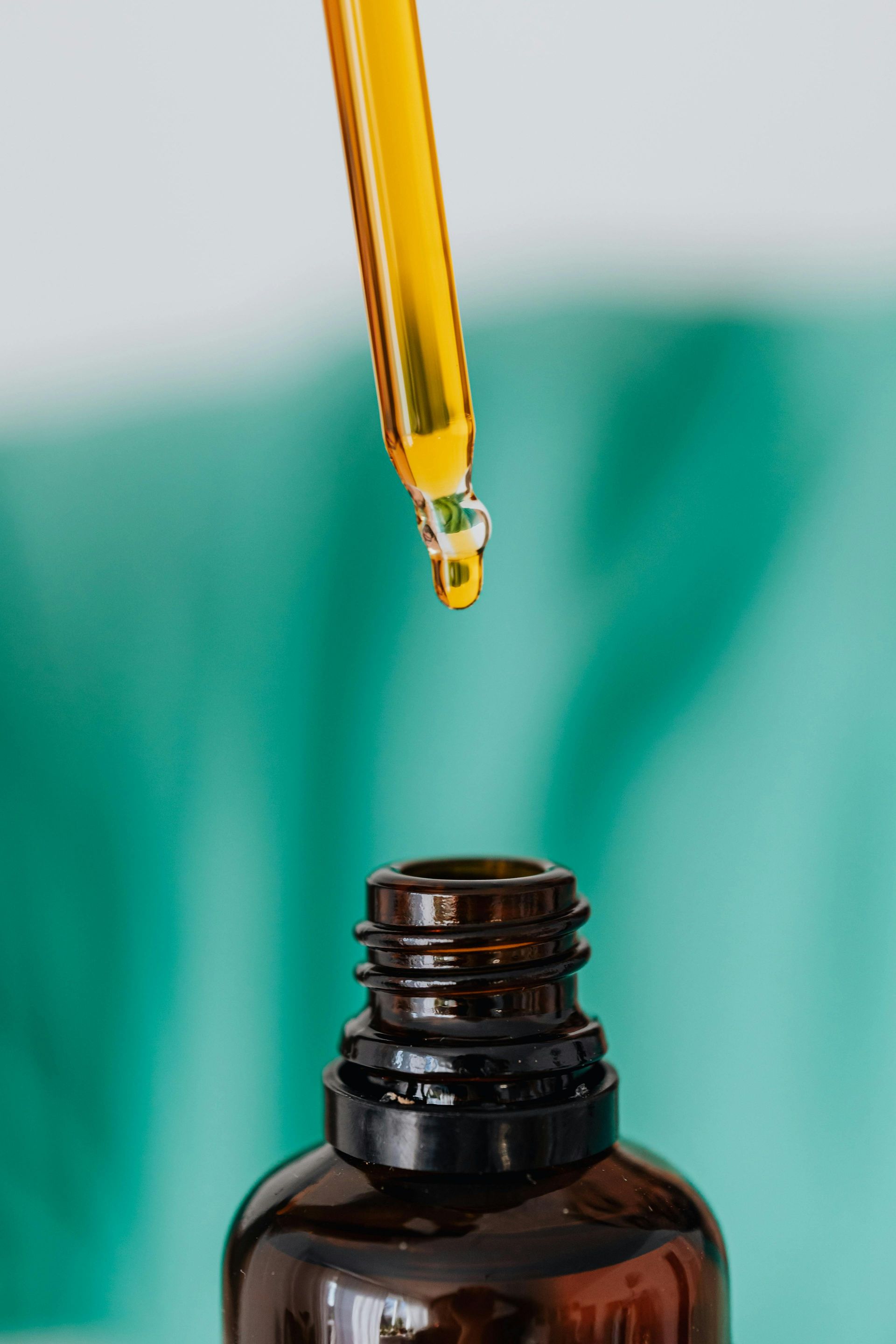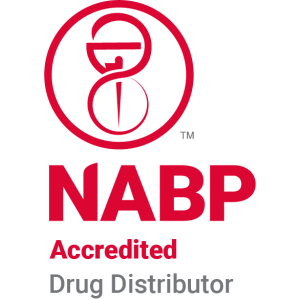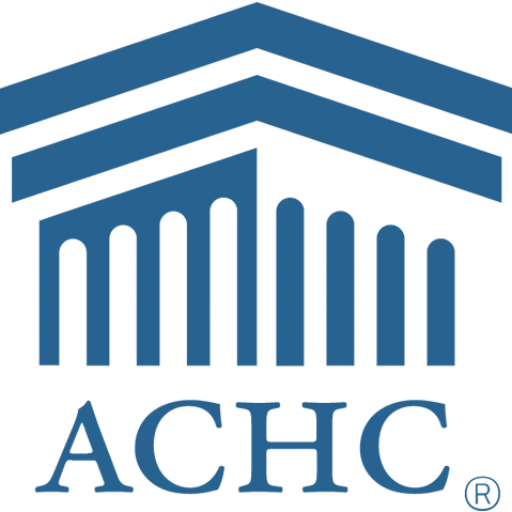TPN in Pediatric Patients: Special Considerations
Introduction
Total Parenteral Nutrition (TPN) plays a critical role in pediatric care by providing essential nutrients to children who cannot absorb them through the digestive tract. Administering TPN in young patients requires careful consideration of their unique physiological and developmental needs. This article delves into the various aspects of TPN in pediatric patients, highlighting specialized guidelines, potential complications, and resources for caregivers and healthcare professionals.
Guidelines and Best Practices for Administering TPN in Pediatric Patients
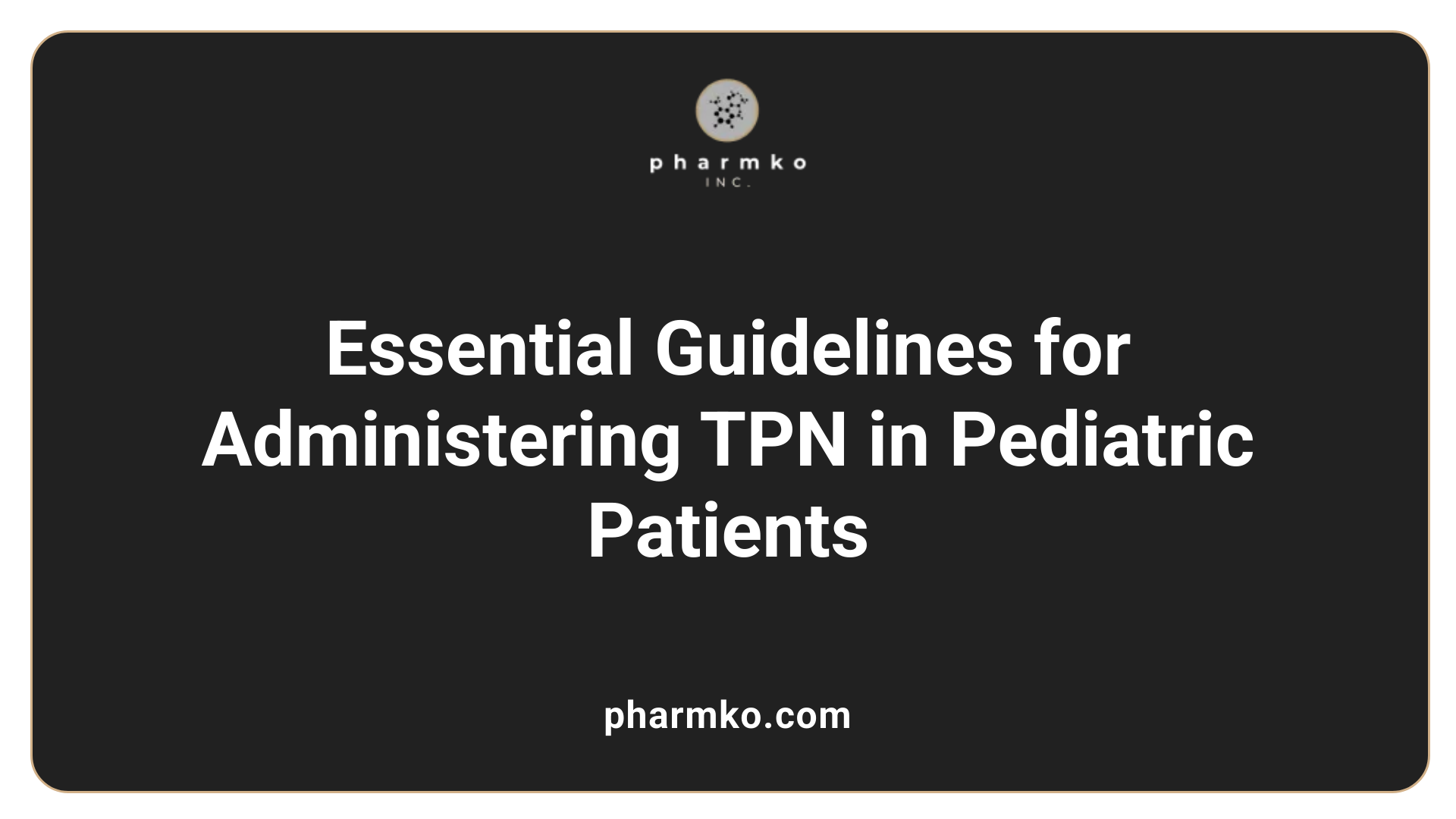
What are the guidelines and best practices for Total Parenteral Nutrition (TPN) in pediatric patients?
Total Parenteral Nutrition (TPN) in pediatric patients requires careful tailoring to meet their diverse nutritional needs across different age groups. Guidelines emphasize the importance of age-specific formulations to ensure adequate nutrient delivery. For neonates , meticulous calculation of TPN is essential, as insufficient nutrient intake in this vulnerable population can lead to long-term metabolic complications.
For children from preschool to school age, TPN should be initiated within 7 days if enteral nutrition is inadequate. The recommendations stress that maintaining specific fluid, energy, and macronutrient requirements is crucial. It is essential to monitor the intake of proteins, fats, carbohydrates, vitamins, and minerals closely to prevent deficiencies that could hinder growth and development.
Additionally, where possible, enteral nutrition should always be prioritized due to its physiological advantages over parenteral. Regular assessments of nutrient intake are necessary to evaluate the effectiveness of TPN and to make timely adjustments based on individual needs.
How should monitoring and adjustment of nutrition intake be managed?
Monitoring and adjustment of nutrition intake in pediatric patients undergoing TPN is critical. This involves tracking electrolyte levels , fluid balance, and overall growth parameters. Healthcare teams should conduct frequent lab tests to check for any deficiencies or imbalances, particularly in calcium, phosphorus, and trace elements that are vital for bone health.
Individualized adjustments may need to be made based on the child’s nutritional status , clinical condition, and any ongoing treatments. Attention to the nutritional status and fluid needs during critical illness is particularly important to support recovery and promote optimal health outcomes.
Nursing Considerations and Administration Protocols
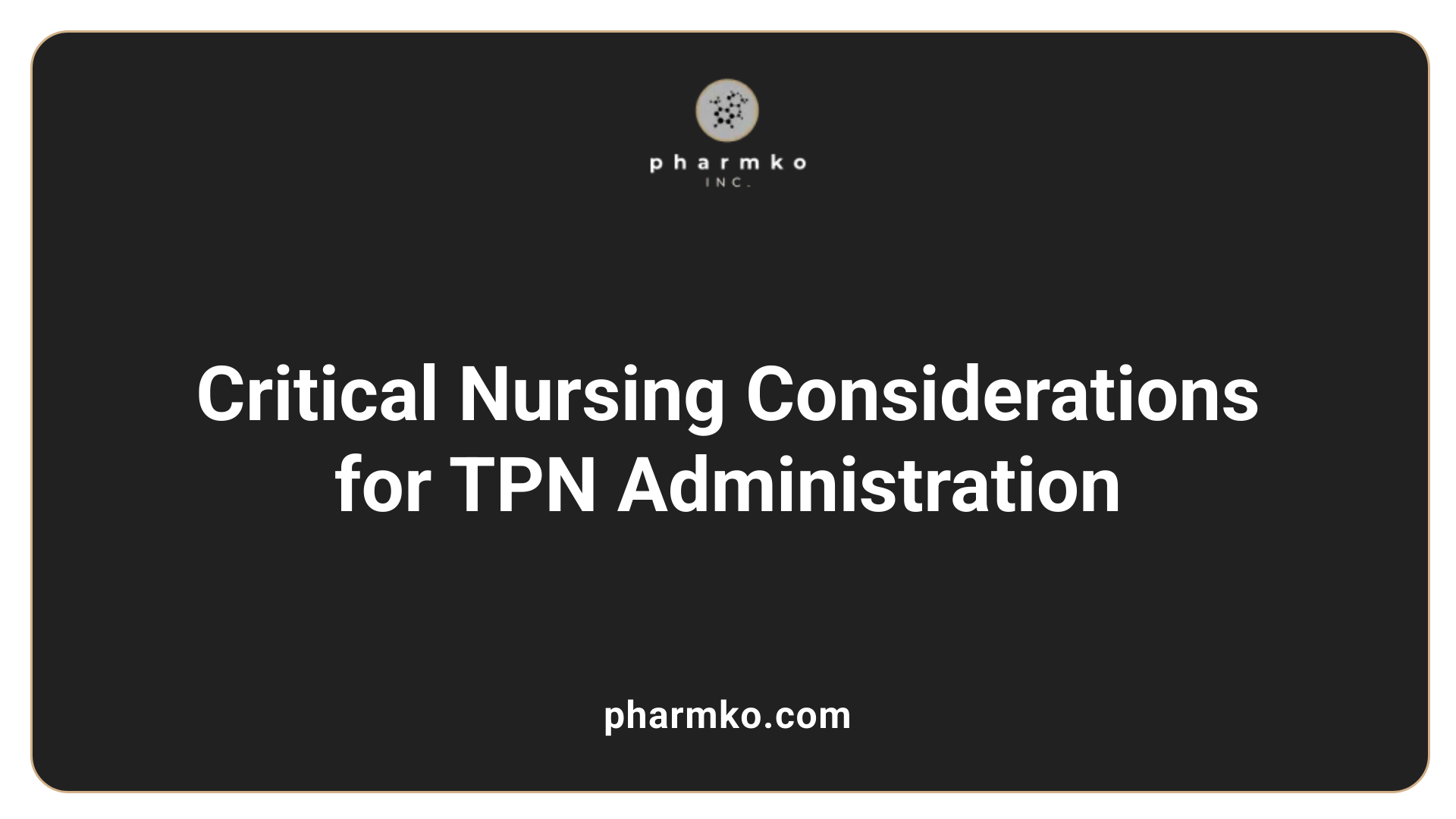
What are the nursing considerations when administering TPN to patients?
When administering TPN (total parenteral nutrition) to pediatric patients, nursing considerations are paramount for ensuring safety and efficacy. Key steps include:
-
TPN Solution Verification :
Nurses must meticulously verify the TPN solution against the physician's prescription to confirm that it contains the correct formulation and dosages. This verification process helps prevent errors that could lead to serious complications. -
Aseptic Techniques :
Due to the risk of catheter-related infections, it’s crucial to adhere to strict aseptic techniques during TPN administration. This includes thorough handwashing, using sterile equipment, and dressing the catheter site appropriately. -
Monitoring Patient Vitals and Labs :
Continuous monitoring is essential. Nurses should perform daily assessments of vital signs, weight changes, and fluid intake/output. Laboratory values such as electrolytes and blood glucose levels should be checked regularly to detect any abnormalities promptly. -
Infection Vigilance :
Since patients on TPN are at an increased risk for infections due to the presence of a catheter, nurses must be attentive to signs of infection, like fever or elevated white blood cell counts. Quick recognition and reaction are critical to managing complications. -
Adherence to Administration Protocols :
TPN should typically be administered steadily over 10 to 12 hours, following the prescribed rate closely to minimize the risk of complications such as fluid overload or hypoglycemia.
By following these nursing considerations, healthcare providers can significantly enhance the safety and effectiveness of TPN in pediatric patients.
Navigating Complications in Pediatric TPN
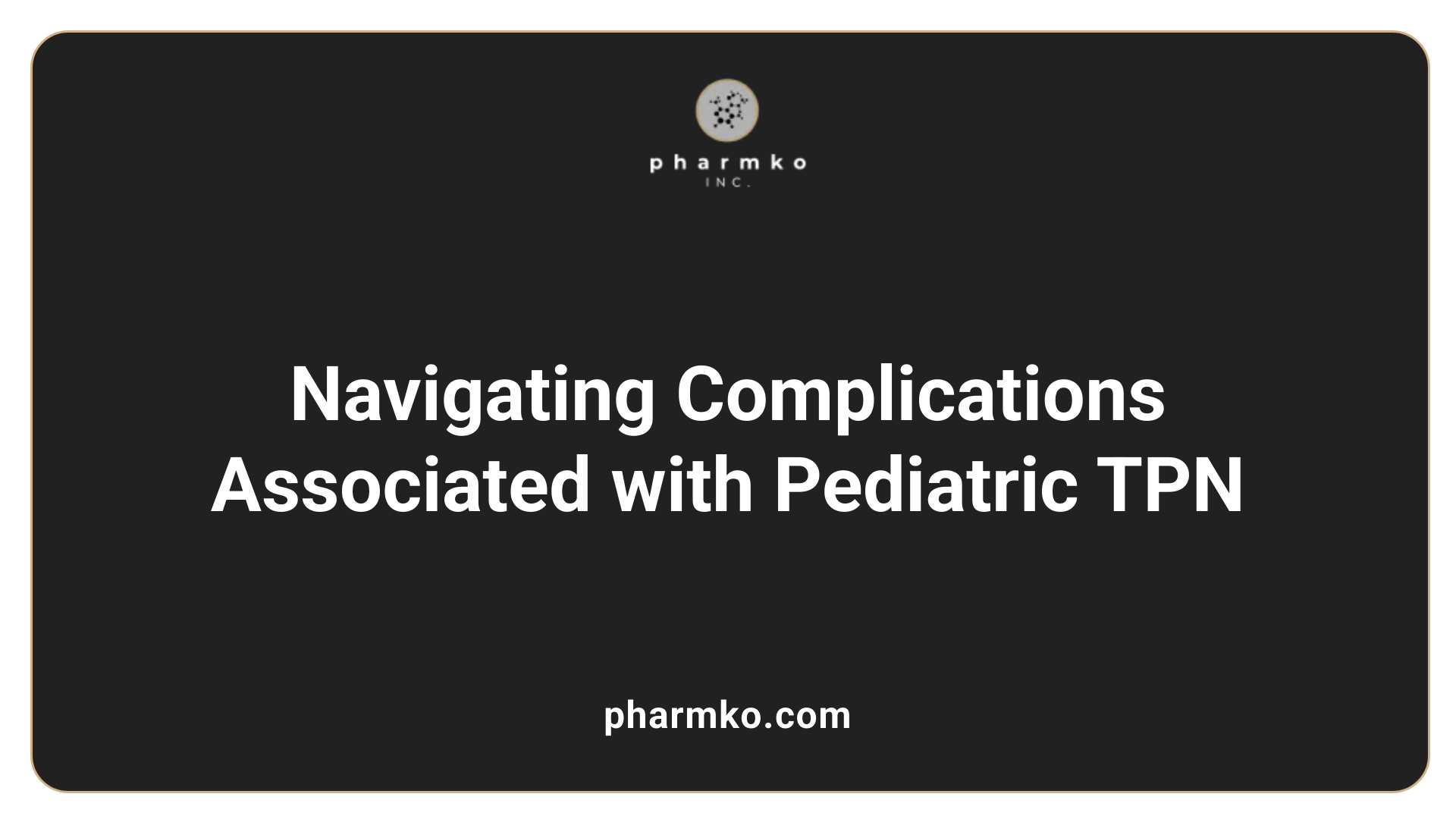
What are the complications and considerations of TPN in pediatric patients?
The use of Total Parenteral Nutrition (TPN) in pediatric patients comes with a variety of complications that necessitate vigilant oversight. Common issues include dehydration and electrolyte imbalances, which can cause severe health difficulties if not managed properly.
Moreover, the risk of thrombosis is significant due to the nature of intravenous lines. Effective monitoring and management are critical to prevent these complications.
Blood sugar levels can fluctuate, leading to conditions like hyperglycemia or hypoglycemia. Continuous monitoring is essential, along with timely adjustments to treatment protocols to ensure equilibrium.
Infections pose another serious risk associated with TPN, owing to the placement of catheters that can serve as entry points for bacteria. Proactive measures, including proper hand hygiene and catheter care, can mitigate these risks.
What are some long-term TPN complications?
Long-term use of TPN can result in more significant complications, including liver failure and micronutrient deficiencies. It is crucial to monitor and adjust nutrient levels to prevent such deficiencies, which can lead to dire consequences for pediatric patients.
Maintaining tailored care plans is essential, as these can help reduce risks associated with prolonged nutritional support. The multidisciplinary approach actively includes regular lab work to customize TPN solutions efficiently.
Careful management of these complications will support healthier outcomes and improved quality of life for children who depend on TPN.
TPN Administration Techniques in Pediatrics
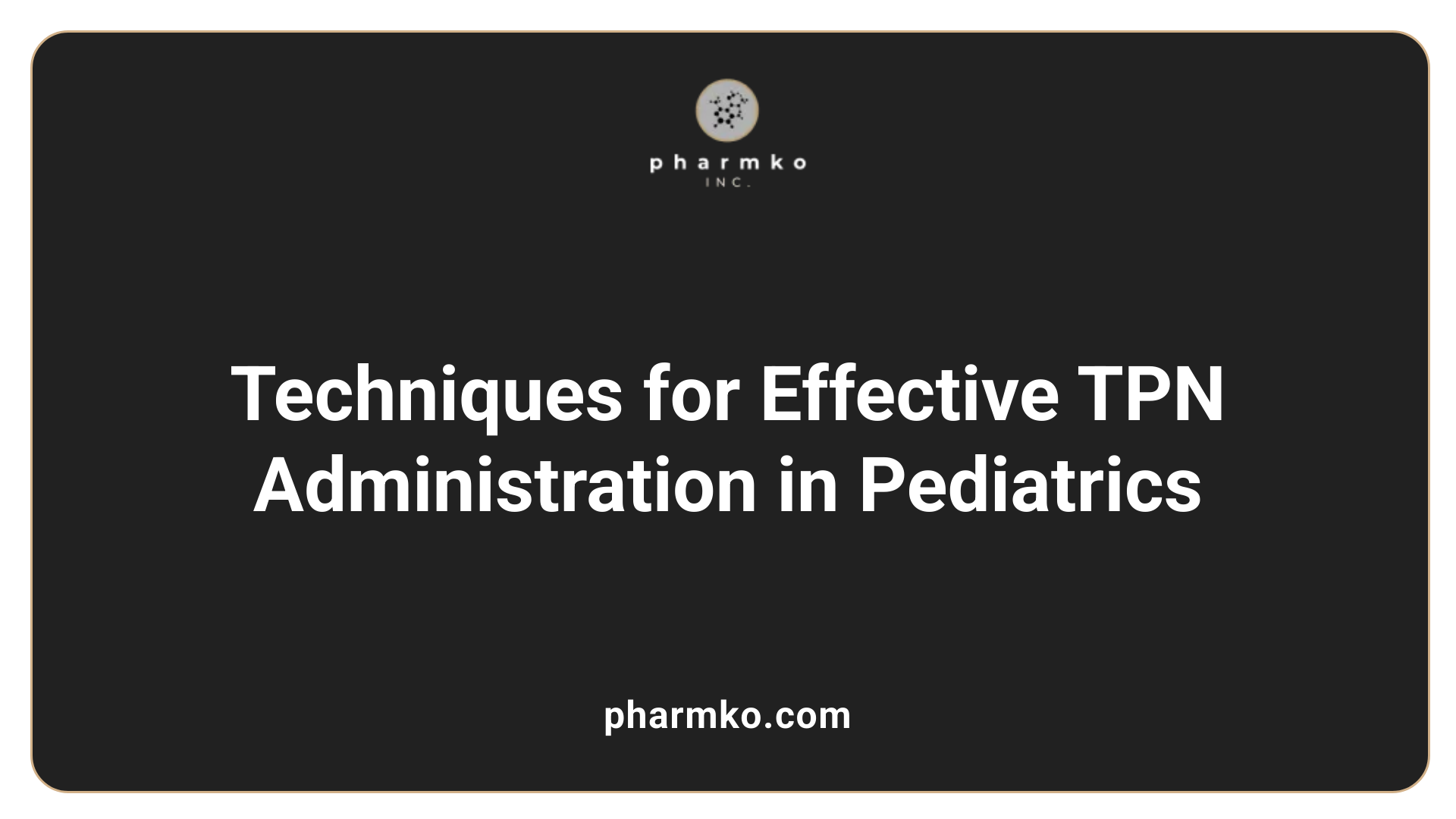
How is Total Parenteral Nutrition (TPN) administered in pediatric patients?
Total Parenteral Nutrition (TPN) is a vital treatment for pediatric patients, especially for those who are critically ill or have gastrointestinal disorders preventing them from ingesting food. TPN is delivered intravenously, allowing essential nutrients, including carbohydrates, proteins, fats, vitamins, and minerals, to bypass the digestive system and enter the bloodstream directly.
The IV line placement for TPN can be done in various locations, such as the hand, foot, scalp, or umbilical vein for short-term access. However, children requiring long-term nutrition support typically use a central line or a Peripherally Inserted Central Catheter (PICC) line. These lines are surgically placed and positioned to minimize the risk of complications, such as infection or blockage.
For neonates, the preferred placement for central catheters is at the junction of the superior vena cava (SVC) and inferior vena cava (IVC) with the right atrium. This technique reduces the risk of heart perforation, a significant concern, especially for very small babies.
Every aspect of TPN administration necessitates rigorous monitoring of blood and urine to ensure that the child receives adequate nutrition. Additionally, healthcare providers must be cognizant of potential risks, including infections and metabolic imbalances, ensuring that adjustments to TPN formulations can be made as needed to optimize the patient’s health.
Educational Resources and Expert Insights

What are the educational resources, studies, and expert opinions available for pediatric TPN?
Educational resources for pediatric total parenteral nutrition (TPN) place significant emphasis on infection prevention and management strategies. Specialized guidelines highlight the critical importance of practicing sterile techniques during dressing changes and monitoring blood glucose levels to avert complications like hyperglycemia.
Studies underscore that regular changes of TPN tubing and containers—ideally every 24 to 48 hours—are vital in mitigating the risk of infections. Additionally, it is recommended that healthcare professionals, particularly nurses, maintain diligent oversight of central line care. This includes utilizing aseptic techniques, conducting appropriate dressing changes based on specific protocols, and being vigilant for any indications of infection.
Expert insights suggest a thorough understanding of potential complications associated with TPN administration. For instance, the correct response to air embolism can involve patient positioning and careful monitoring for any adverse symptoms.
In essence, continuous education surrounding TPN management, along with strict adherence to established safety protocols, is essential for optimizing outcomes for pediatric patients reliant on this form of nutrition.
Conclusion
TPN is an indispensable tool in pediatric care, providing essential nutrition to children who cannot ingest or absorb food normally. Successfully administering TPN in pediatric patients hinges on adhering to specific guidelines and monitoring protocols tailored to their unique needs. By exploring the recommended practices and remaining vigilant about potential complications, healthcare providers can not only improve patient outcomes but also enhance the overall quality of life for these young patients and their families. Continuous education and strategic management are vital to ensuring that TPN remains a safe and effective solution in pediatric nutritional therapy.
References
- Enteral and parenteral nutrition considerations in pediatric patients
- [PDF] Pediatric Parenteral Nutrition - naspghan
- Total Parenteral Nutrition - Children's Hospital of Orange County
- Total Parenteral Nutrition - StatPearls - NCBI Bookshelf
- Parenteral nutrition in infants and children - UpToDate
- Special Considerations in the Paediatric Patient - ScienceDirect
- Total Parenteral Nutrition (TPN) Frequently Asked Questions
- [PDF] TPN; Caring for your child on Total Parenteral Nutrition



